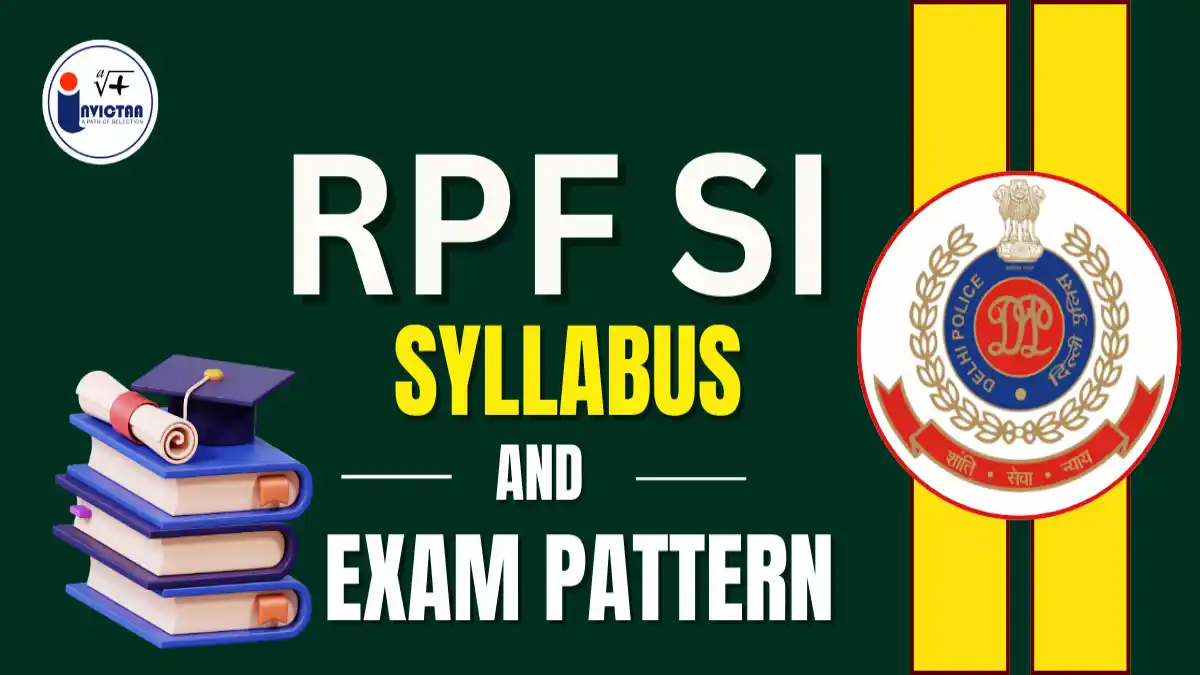The Railway Protection Force (RPF) Sub-Inspector (SI) examination is a highly competitive recruitment for graduates seeking an officer-level career in a central government uniformed force. To succeed in this prestigious exam, a comprehensive understanding of the multi-stage selection process, the detailed exam pattern, and the extensive syllabus is the first and most critical step. The selection process is a rigorous evaluation of a candidate's intellectual aptitude, physical endurance, and medical fitness.
This guide provides a complete and highly detailed breakdown of the RPF SI syllabus and the stage-wise exam structure for 2025. It is designed to help you create a robust and effective preparation strategy by covering every aspect of the examination in detail.
🚀 Download Invictaa Plus App For A Structured Preparation 🚀
RPF SI Selection Process & Exam Pattern 2025
The RPF SI selection process is conducted in three distinct phases. A candidate must qualify in each phase to advance to the next. The final merit list is prepared based solely on the marks obtained in the Phase I Computer Based Test (CBT).
- Phase I: Computer Based Test (CBT)
- Phase II: Physical Efficiency Test (PET) & Physical Measurement Test (PMT)
- Phase III: Document Verification (DV)
Phase I: Computer Based Test (CBT) Pattern
This is the primary stage, as the final selection depends entirely on the score achieved in this test. The exam pattern is identical to the Constable exam in terms of structure but differs in the difficulty level of the questions.
| Subject | No. of Questions | Maximum Marks |
|---|---|---|
| Arithmetic | 35 | 35 |
| General Intelligence & Reasoning | 35 | 35 |
| General Awareness | 50 | 50 |
| Total | 120 | 120 |
Marking Scheme & Key Details for CBT:
- Correct Answer: Each question carries 1 mark.
- Negative Marking: There is a penalty of 1/3rd of a mark for each incorrect answer.
- Total Duration: A composite time of 90 minutes is allotted.
- Normalization of Marks: As the CBT is held in multiple shifts, marks will be normalized to ensure fairness across different difficulty levels.
- Minimum Qualifying Percentage: UR/EWS/OBC - 35%, SC/ST - 30%.
Phase II: Physical Efficiency Test (PET) & Physical Measurement Test (PMT)
This stage is mandatory and qualifying in nature. No marks are awarded, but failure to pass any event will result in immediate disqualification. The standards for SI are different and more challenging than for Constable.
Physical Efficiency Test (PET) Standards
| Event | Standard for Male Candidates | Standard for Female Candidates |
|---|---|---|
| 1600 meters run | Must complete within 6 minutes 30 seconds | Not Applicable |
| 800 meters run | Not Applicable | Must complete within 4 minutes |
| Long Jump | 12 feet (in 2 chances) | 9 feet (in 2 chances) |
| High Jump | 3 feet 9 inches (in 2 chances) | 3 feet (in 2 chances) |
Physical Measurement Test (PMT) Standards
| Category | Height (Male) | Height (Female) | Chest (Male - Unexpanded/Expanded) |
|---|---|---|---|
| UR/OBC | 165 cm | 157 cm | 80/85 cm |
| SC/ST | 160 cm | 152 cm | 76.2 / 81.2 cm |
| For Garhwalis, Gorkhas, Marathas, Dogras, Kumaonis and other specified categories | 163 cm | 155 cm | 80/85 cm |
RPF SI Syllabus 2025: In-Depth Topic Breakdown
Success in the RPF SI CBT is dependent on a thorough understanding of every topic. The questions are designed to be of the Graduation standard. Here is a highly detailed, chapter-wise breakdown of the syllabus.
Detailed Topic-wise Syllabus
| Subject | In-Depth Topics & Chapters |
|---|---|
| Arithmetic |
This section assesses numerical ability and problem-solving skills at the graduate level.
|
| General Intelligence & Reasoning |
This section evaluates a candidate's logical, analytical, and problem-solving abilities through a variety of verbal and non-verbal questions.
|
| General Awareness |
This is a vast section designed to test a candidate's knowledge of current affairs and general knowledge from a graduate-level perspective.
|
(Candidates are advised to download the official syllabus PDF for complete details.)
FAQs: RPF SI Syllabus 2025
Q1: Is there a sectional cut-off in the RPF SI CBT?
Ans: The official notification typically specifies an overall minimum qualifying percentage. While there may not be a rigid sectional cut-off, it is important to perform well in all sections as the final merit is based on the overall normalized score.
Q2: What is the educational level of the questions asked in the CBT for SI?
Ans: The standard of the questions in the Computer Based Test (CBT) for the Sub-Inspector post will be of the Graduation level.
Q3: How is the final merit list for RPF SI prepared?
Ans: The final merit list is prepared based only on the marks obtained by the candidate in the Computer Based Test (CBT), provided they successfully qualify in the Physical Efficiency Test (PET), Physical Measurement Test (PMT), and Document Verification.
Q4: Is there an interview in the RPF SI selection process?
Ans: No, there is no interview or viva-voce in the selection process for the post of RPF Sub-Inspector.
Q5: What is the main difference between the syllabus of RPF Constable and RPF SI?
Ans: The topics and subjects covered in the syllabus for both RPF Constable and SI are the same. The primary difference lies in the difficulty level and depth of the questions. The questions for the Constable exam are of the 10th/Matriculation standard, while for the SI exam, they are of the Graduation standard, requiring a more in-depth understanding of the concepts.

